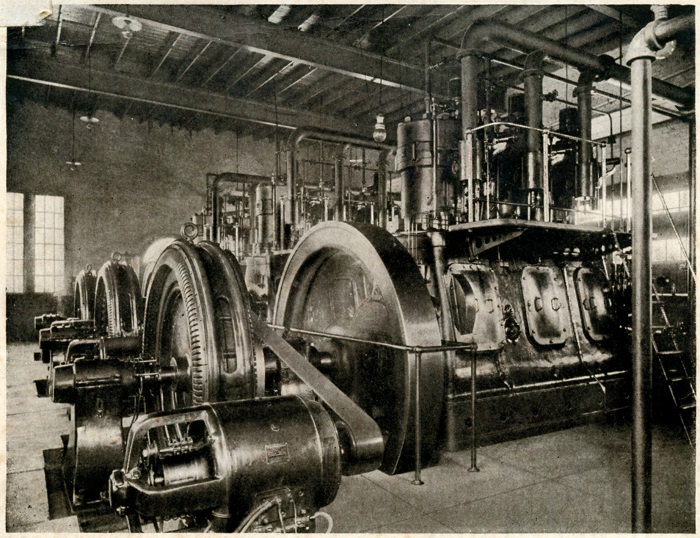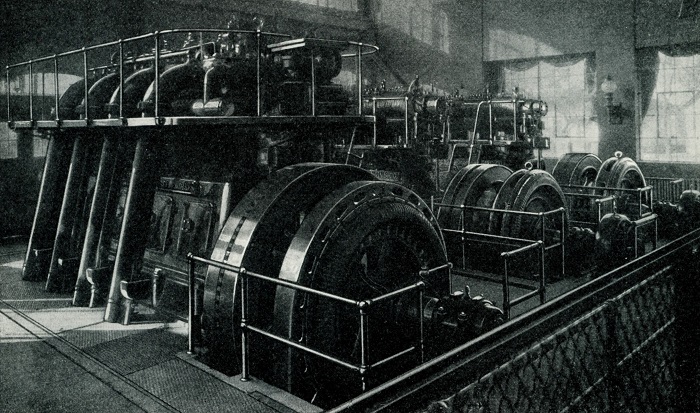On October 9th 1897 beer magnate Adolphus Busch of St Louis, Missouri signed a licence agreement with Rudolf Diesel with rights for building diesel engines in the USA and Canada. Following on from the agreement Busch founded the Diesel Motor Company on January 4th 1898 in New York. It had been intended that the company would only be a licensing firm, selling completed engines from the companies that built them.
However despite the original intentions a diesel engine was built in 1898 and installed in the Anheuser-Busch brewery in St Louis. The engine failed in 1900 bringing to an end the Diesel Motor Company of America.
In 1902, a successor company to the Diesel Motor Company was created by Busch and the International Power Company, namely the American Diesel Engine Company. An improved design was created in 1902, a simple four-cycle trunk piston diesel for stationary usage. By 1909 157 diesels had been manufactured. In 1908, Busch acquired all assets of this company due to a variety of issues and became its sole proprietor moving the company to St Louis.
The Busch-Sulzer Brothers-Diesel Engine Company, St Louis was established on December 7th 1910 as a joint venture between Adolphus Busch and Sulzers Brothers as a successor to the American Diesel Engine Company. Rudolf Diesel joined the Joint Venture in July 1911. The two hypens indicate the tripartite nature of the Joint Venture.
Sulzer assigned its US and Canadian patent rights and agreed to supply drawings for 2sc and 4sc engines. Thus the new company became a licensee of Sulzer Brothers Ltd. This license expired in 1926.
In 1913 the Busch-Sulzer Company moved into a new rail-connected factory in St Louis. In the same year three of the key figures in this story passed away, Adolphus Busch, Edward Meier (an engineer advisor to Busch) and Rudolf Diesel
The Busch-Sulzer engines were actually built to the firm's own designs. Instead of following the usual licensee practice of using the Sulzer designs as delivered by the Winterthur company, Busch-Sulzer made its own designs while drawing on Sulzer design concepts and patented ideas.
The short name 'Busch-Sulzer' has long caused confusion. It appears to be in the usual form of 'licensee-licensor' whereas in fact it is the actual company name.
When the ten year expiration of the monopoly on the diesel patent rights expired Busch-Sulzer ventured into the risky business of submarine engine manufacture, building 72 U-1, U-2 & U-3 diesels between 1915 - 1917. This venture came at the sacrifice to the stationary engine business. A small number of submarine diesel engines were built in the 1920s and the company regained some of the market for stationary engines, but was only prosperous between 1926 & 1928.
In the 1920s there was success in designs with airless injection and two-cycle engines.
Busch-Sulzer is reckoned to have manufactured 815 marine and stationary diesel engines totalling 332,410 bhp under the Sulzer license up to 1931.
Diesel engines built by Busch-Sulzer after that period were solely to its own designs and are not included in the statistics of Sulzer diesel engines. Busch-Sulzer diesel engines for rail application did not begin development until 1932, with the the Illinois Central demonstrator completed in 1936.
In later years, after 1926??, Busch-Sulzer received engineering research and technical advice from AEG, Germany.
Late in the life of the company contracts were awarded for diesel engines for US Navy minesweepers and tugs.
The Busch-Sulzer company came to and end in 1946 when it was purchased by Nordberg Manufacturing Co. By that date Busch-Sulzer had built a grand total of 1,670 diesel engines of various types for marine, stationary and rail traction applications with unit outputs of 75bhp to 3,750bhp, including the above mentioned ones under the Sulzer license.
![]()
Stationary Powerplants
From a list published circa 1929:
Type F, four-cycle, up to 450 bhp
Type B, four-cycle, up to 600 bhp
Type C, two-cycle, from 600 bhp to 7,000 bhp
Type E, two-cycle, up to 1,500 bhp
Special Types for locomotives etc.
1898
Missouri: September: Anheuser-Busch Brewery, St Louis; two-cylinder 60bhp for use in bottling plant, replaced in 1911.
1899
1900
1901
1902
Rhode Island: Machine Shop
Rhode Island: Machine Builders
Connecticut: Ordnance
1903
New York: Battery Charging
Florida: Electric Light Plant
New Jersey: Iron Doors & Windows
Illinois: Isolated Plant
Illinois: Wholesale Grocery
Massachusetts: Municipal Plant; two 120bhp diesels, a 225bhp unit in 1906 & similar in 1911
Florida: Municipal Plant
1904
Indiana: Structural Steel & Iron
Pennsylvania: City Gas Plant; two 75bhp diesels connected to AC generators, additonal diesel purchased 1907.
Texas: Ice & Cold Storage
Texas: Texas Power & Light Company; Cleburne & Sherman
In 1904 six 225bhp 3-cylinder 4-cycle diesels were ordered for the installation of three each at Cleburne TX and Sherman TX. The Sherman installation coupled each engine to a 150kW, 230volt DC generator, at Cleburne they were connected to a three-phase, 2,300volt 60cycle alternating current generator. They weighed about 100,000 lbs and cost about $14,000 each. They were active by January 1905.Texas: Street Railway
Photograph Busch-Sulzer publicity material. Cleburne TX, 1904, three 225bhp diesel engines.
New York: Marble Works
1905
Connecticut: Quarries
Indiana: Office Building
Maryland: Piano Factory one 225bhp diesel engine at 165rpm connected to a 150kW DC generator.
Massachusetts: Woolen Mills
New Jersey: Worsted Mills; one 170bhp diesel engine, rope drive transmission.
New York: Foundry & Machine
New York: Time Recording Instruments
Rhode Island: Silverware; 2x225bhp diesels connected to AC generator.
Texas: Flour Mill & Elevator (first Busch-Sulzer diesel engine for a flour mill, 250bhp & 125bhp?)
Pennsylvania: Locomotive Works
Wisconsin: Waterworks
1906
Arizona: Copper Mining
Florida: Phosphate Mining
Massachusetts: Cordage Works
Massachusetts: Cotton Twine
Massachusetts: Cotton Webbing
Rhode Island: Drop Forge Shop
New Mexico: Gold Mines
Indiana: Paper Mills
1907
Arizona: Reduction, Metallurgical
Indiana: Automobile Works
Massachusetts: Cotton Goods
Pennsylvania: City Gas Works; see 1904, additional diesel added 1907.
Indiana: Glass Works
New York: Industrial??; two 120bhp diesels in 1907, one 225bhp diesel in 1912.
Rhode Island: Nut & Bolt
Rhode Island: Optical Works
Rhode Island: Wire Mills
Texas: City of Bryan - two diesels, circa 1907, a 3rd diesel was installed in 1919 (does this refer to the town of Bryan in Ohio??)
Texas: Railroad Shops; two 120bhp diesels, one 225bhp diesel added in 1909.
1908
1909
Massachusetts: Yarn
1910
Massachusetts: Sheeting, Cotton; two 450bhp diesel engines coupled to an alternator.
Minnesota: Auxiliary to Water Power
New York: Knitting Mill
1911
Missouri: Anheuser-Busch Brewery, St Louis; larger diesels replaced the 1898 unit in the bottling plant.
Pennsylvania: Chocolate Works (Hershey?); two diesels installed in 1911, further diesels in 1912 & 1913, total of six producing 1,350bhp.
Rhode Island: Naval Torpedo Station
1912
New Jersey: Printing Ink
Oklahoma: Cement Works; one 170bhp diesel belted to line shaft.
Pennsylvania: Correctional Institution; one 120bhp diesel for lighting and power.
Ohio: Encaustic Tiling.
Massachusetts: Fertiliser Works
Tennessee: Municipal Electric Plant; 225bhp diesel connected to 200kva alternator.
1913
Illinois: Railway Tunnel Ventilation
Kansas: Roller Mills
Missouri: new Busch-Sulzer Works, St Louis: three four-stroke 225bhp diesels running at 164rpm connected to 160kW 115-230 volt DC generators.
Texas: Cotton Gin
Texas: Cotton Seed Oil
Texas: Ice Cream
Massachusetts: Navy Yards; pontoon crane? one 225bhp diesel.
Hawaii: Navy Yards; pontoon crane, one 225bhp diesel.
1914
Iowa: Estherville. One diesel installed in 1914, a 2nd in 1920, a 500bhp diesel - date?? and a 600bhp diesel in 1929.
Kansas: Kiowa, municipal light & pumping. One 3-cylinder 120bhp diesel, 225rpm installed September 1914; engine No.377.
Wisconsin: Appleton. 2,225bhp Type A diesel engines, each geared to two 2,000,000 gallons per day triplex pumps through cut-off couplings.
1915
California: Panama Pacific International Exposition, San Francisco, (Feb - Dec 1915) on display in the Machinery Hall; 4-cylinder 500bhp.
Iowa, Esterville: 225bhp installed in 1915, 250bhp diesel installed 1920 & 500bhp diesel installed 1924.
Iowa, Manila: Single diesel installed in 1915 for electricity generation, two further diesels added later.
Kansas, Greenburg: two diesels installed, a 400bhp diesel added in 1925 and a 600bhp added about 1931.
South Dakota, Sioux Falls: Water Department, diesels directly connected to electric generators and geared to triplex pumps.
South Dakota, Madison electric light & power plant:
One 365bhp four cylinder engine coupled to a 240kW two phase generator, cost $35,000, On July 28th 1918 the wooden building containing the power generation equipment was destroyed by fire. The diesel engine was repaired requiring a new camshaft, rocker arm rollers and the starting and injection air tanks. The generator was rewound and the whole system changed to three phase. Gallons of fuel burned per hour varied between 9.5 gallons (load 75kW) and 21 gallons (load 265kW).About February 1920 two 250bhp engines were added, direct connected to three-phase generators and direct connected exciters.
In February 1927 a 600bhp engine was added connected to 410kW generator, providing the city of Madison with total installed capacity of 1,465bhp.
Photograph Busch-Sulzer publicity material. Madison SD, February 1920, three diesel engines, one of 365bhp and two of 250bhp each, the latter pair having just been installed.
1920
South Dakota: Madison electric light & power plant: two 250bhp diesels (see note for 1915).
1921
Kansas, Osbourne: new plant built, one diesel installed, a 500bhp diesel added in 1929.
Louisiana, Opelousas: two diesels installed, by 1932 total capacity was 2,060bhp.
Louisiana, Ruston: one diesel installed, two 400bhp diesels added in 1927.
New York: Freeport (Nassau County) electric light & power plant:
One 365bhp four cylinder engine installed May 1921 (#529).In January 1923 a four? cylinder 750bhp diesel engine with a 500kW generator was installed (#698), followed by a similar engine in April 1924 (#723).
In March & December 1927 two six cylinder 1,150bhp diesel engines each with 750kW generators were installed (#786 & #832), relegating the existing steam plant to standby status.
In 1928 one six? cylinder 1,500bhp diesel engine with a 1,050kW generator was installed. This gave the facility diesel engines totalling 5,665bhp, which at the time was the largest municipal diesel plant in the USA. This allowed for all the steam plant equipment to be removed, with all water works changed to all electric operation.
When installation took place for the 1,500bhp engine in 1928 space was left for a 2nd similar engine, but in 1930 a decision was made to install a Type H-19 3,000bhp engine from Busch-Sulzer, set at 240rpm, single acting, two cycle, trunk type, airless injection, separate turbo blower.
Photograph Busch-Sulzer publicity material. Freeport, NY, 1923, a recently installed 750bhp diesel engines, in the background is the 365bhp engine.
1923
New York: Freeport (Nassau County) electric light & power plant: one 750bhp diesel engine (see note for 1921)
1924
New York: Freeport (Nassau County) electric light & power plant: one 750bhp diesel engine (see note for 1921)
1926
Oregon: McMinnville Water & Light: one 600bhp diesel engine.
1927
South Dakota: Madison electric light & power plant: one 600 bhp diesel (see note for 1915).
New York: Freeport (Nassau County) electric light & power plant: two 1,150bhp diesel engines (see note for 1921)
New York: Greenport (Long Island) municipal lighting plant: one 4-cylinder diesel engine - No.831 (2) of 1927. Engine and other components on display at Coolspring Museum.
1928
New York: Freeport (Nassau County) electric light & power plant: one 1,500bhp diesel engine (see note for 1921)
1929
Oregon: McMinnville Water & Light: one 1,500bhp diesel engine, to work alongside a 600bhp engine installed in 1926.
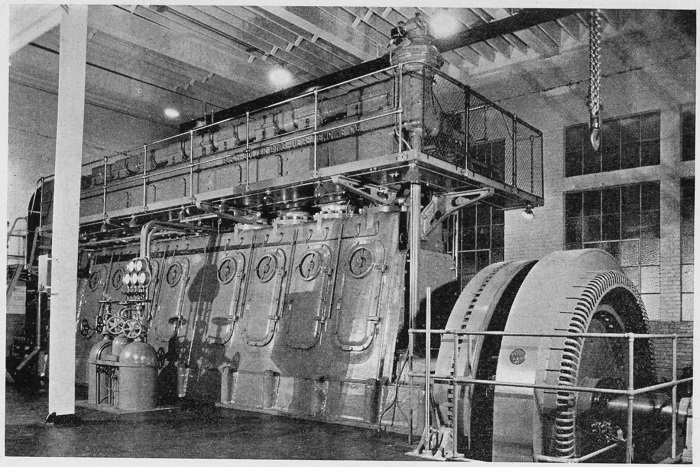
Date unknown
Arkansas, Batesville: circa 1925/26, total installed horsepower 400bhp.
British Columbia, Revelstoke: 600bhp diesel, provides reserve power to a remote hydro-electric plant.
California, Los Angeles area: multiple locations using diesels to power motor driven water pumps. Locations include Lomita (added before 1926).
California, Palo Alto, installed prior to 1924.
Colorado, Loveland: hydro-plant, one diesel as an auxiliary, for peak loads or during water shortages (installed before 1932).
Connecticut, Norwalk: installed prior to 1924.
Florida, Fort Pierce: circa 1925/26, total installed horsepower 1,150bhp.
Illinois, Chicago: Sanitary District of Chicago, installed prior to 1924.
Illinois, Rochelle: installed prior to 1924.
Iowa, Keokuk Dam, prior to 1913, two 120bhp diesels.
Kansas, Belleville, installed prior to 1924.
Kansas, Kingman.
Louisiana, Franklin: installed prior to 1924.
Louisiana, Lafayette: one diesel installed, followed by a second, a third diesel of 600bhp was added in 1929.
Minnesota, Thief River Falls: installed prior to 1924.
Nebraska, Wisner: one diesel installed circa 1921, a second circa 1923 and a third circa 1930??
New Jersey, Gloucester City: installed prior to 1924.
Ohio, Bryan: installed prior to 1924.
Oklahoma, Anadarko: installed prior to 1924.
Oklahoma, Cherokee: circa 1925/26, total installed horsepower 400bhp.
Oklahoma, Duncan: two diesels installed, followed later by a third.
Oklahoma, Newkirk: three diesels installed, totalling 500bhp, assumed to be an early install.
Oklahoma, Perry: installed prior to 1924.
Saskatchewan, Swift Current: circa 1925/26, total installed horsepower 600bhp.
Texas, Bryan (or Bryan, Ohio??): five diesels, all installed prior to 1932, two at least installed 1907/1908.
Texas, Seguin: circa 1925/26, total installed horsepower 400bhp.
Wisconsin, Menasha: installed prior to 1924.
![]()
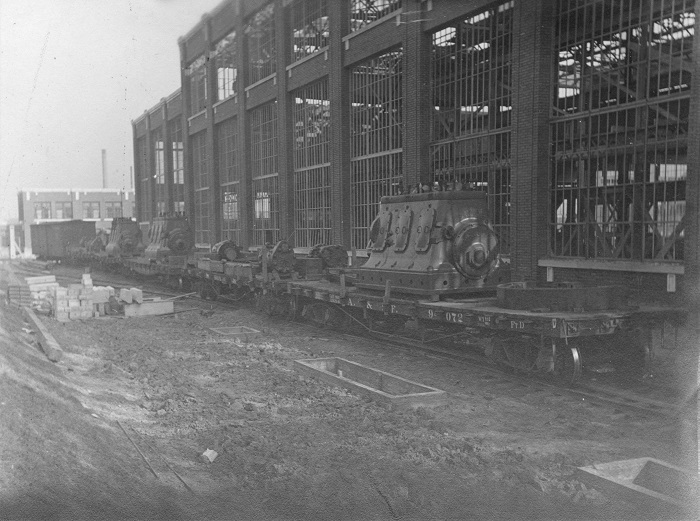

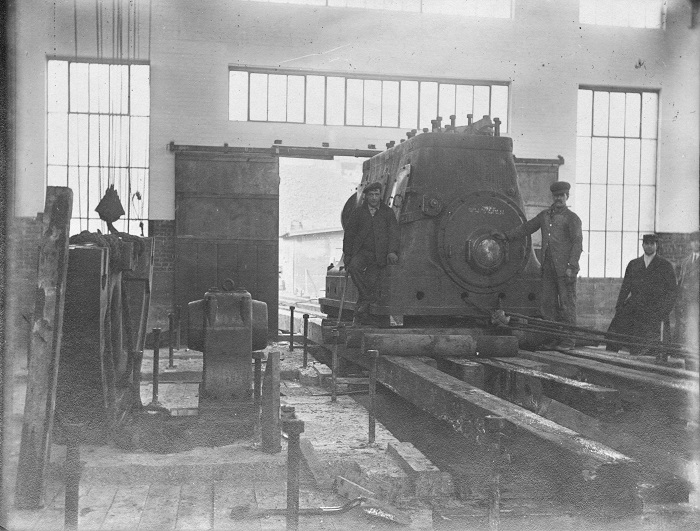
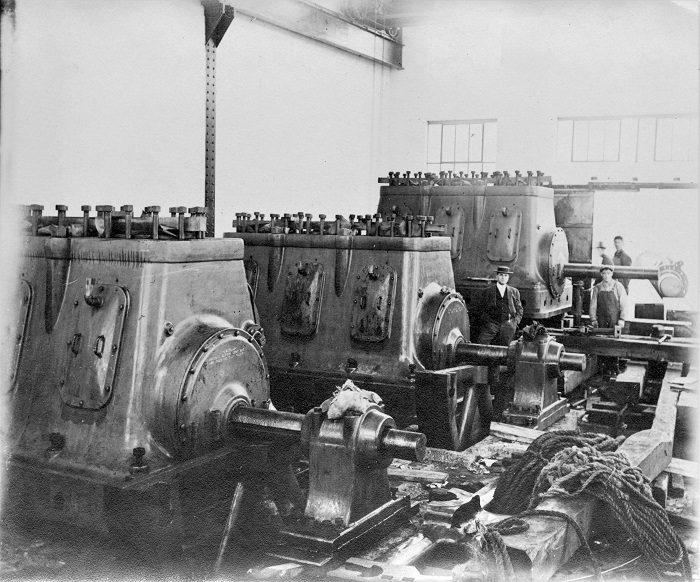
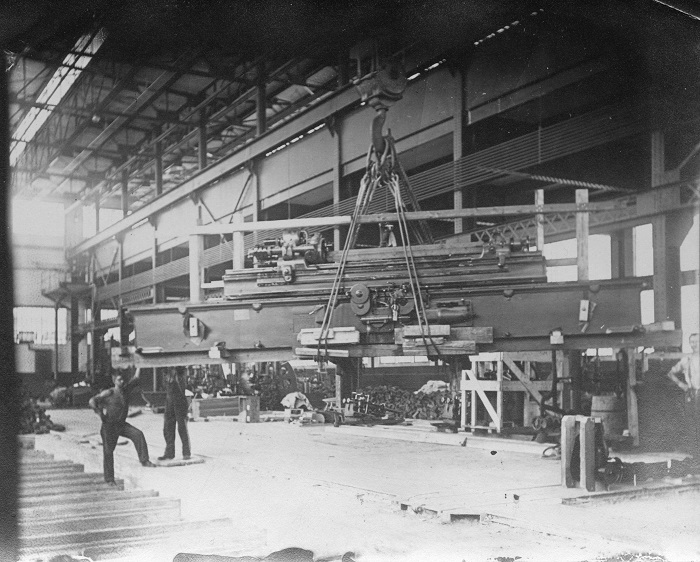
Navy Ships: Argentina
Rivadavia-class battleships (two)
Rivadavia built by Fore River Shipbuilding Company, Massachusetts
Moreno built by New York Shipbuilding Corporation, Camden, New Jersey
Built: 1910 - 1915
In commission: 1914 - 1956
Primary propulsion: Brown-Curtis geared steam turbines, steam provided by eighteen Babcock & Wilcox boilers.
Diesel marine auxiliaries: Busch-Sulzer.
Navy Ships: United States
Fleet Tugs:
AT-96 to AT-118 (later ATF-96 to ATF-118)
The eight vessels below were powered by four Busch-Sulzer 750bhp 539 diesels and presumed re-engined at some point.
AT-102 laid down ?/43, commissioned 4/44, decommissioned 5/48, struck off 7/63 and sold to Columbia. (Presumed re-engined).
AT-104 laid down 8/43, commissioned 6/44, decommissioned 6/50, struck off 7/63 and sold to Columbia, sunk as artificial reef off Columbia September 2004. (Presumed re-engined).
AT-105 laid down 10/43, commissioned 7/44 & 10/50, decommissioned 6/48 & 10/85, struck off 1/92 and sold to Northeast Wisconsin Railroad Transportation Commission, scrapped 2012. (Re-engined as above).
AT-107 laid down 8/42, commissioned 10/43, decommissioned 10/69, struck off 10/69, resold and later scrapped. (Presumed re-engined).
AT-108 laid down 10/42, commissioned 12/43, decommissioned 4/48, struck off 7/63, sunk by gunfire May 27th 1975. (presumed re-engined).
AT-109 laid down 10/42, commissioned 2/44, decommissioned 4/48, struck off ??, sunk of Chile August 15th 1965 during storm whilst on loan to Chile. (presumed re-engined).
AT-111 laid down 1/43, commissioned 6/44, struck off ?? sunk by mine explosion off Korea August 27th 1952. (Presumed re-engined).
AT-112 (later AGS-24) laid down 6/43, commissioned 9/44 & 6/60 - as a survey ship, decommissioned 5/50 & 1/70, struck off 1/70 and sold for scrap. (presumed re-engined).
The six vessels below may have been powered by four Busch-Sulzer 750bhp 539 and later re-engined with Cleveland Diesel Engine Division of General Motors model 12-278.
AT-96 (mod 12-278) laid down 11/42, commissioned 11/43, struck off 9/78 and sold to Mexico. Re-engined with four Alco diesels (maybe 1947).
AT-101* (mod12-278) laid down 5/43, commissioned 3/44, decommissioned 9/78, struck off 9/78 and sold to Mexico. (Re-engined as above).
AT-113* (mod12-278) laid down 9/43, commissioned 8/44, decommissioned 1/92, struck off ?? and sold to Argentina. (Re-engined as above).
AT-114* (mod12-278) laid down 5/43, commissioned 9/44, decommissioned ??, struck off 6/78 and sold to Taiwan. (Re-engined as above).
AT-117* (mod12-278) laid down 9/43, commissioned 2/45, struck off 11/46, vessel damaged beyond economic repair typhoon Louise Okinawa October 9th 1945.
AT-118* (mod12-278) laid down 1/44, commissioned 3/45, decommissioned 5/47, struck off 9/62 and sold to Taiwan. (Re-engined as above).
Adroit Class: Minesweepers / Submarine Chasers:
AM-96 to AM-99; later PC-1600 to PC1603.
These four vessels were commissioned between 9/42 and 6/43 with AM99 being struck off in 6/45 and the remainder in 6/48.
AM99 was taken out of service after being hit by two kamikaze planes, the hull would be used as fill for a breakwater in the Ryuku Islands during 1957.
AM98 would see service after World War Two, being re-engined with two Alco 850bhp diesels, renamed Seaborn II and seeing service in the San Francisco Bay area and the Portland OR area, reported out of use circa 1972.
The Adroit Class totalled 18 vessels, the first 14 being equipped with 2 x 1,770bhp Cooper Bessemer GNB-8 diesels, the remaining four were equipped with 2 x 1,440bhp (1,074kW) Busch-Sulzer BS 539 diesels.
Busch-Sulzer diesel engine serial numbers BS1141 to BS1148.
![]()
Submarines: United States Navy
Submarine production for the United States Navy saw the use of gasoline engines in SS-1 to SS-19.5, SS-26 & SS-27.
The first diesel engine powered submarines for the US Navy were laid down in 1909 and would become SS-20 to SS-25. New London Ship & Engine Company produced 700bhp engines for E-1 (SS-24) & E-2 (SS-25) and 780bhp engines for F-1 (SS-20) & F-2 (SS-21). Craig Shipbuilding Company built 800hp engines for F-3 (SS-22) & F-4 (SS-23).
G-class
The first submarine to be powered by Busch-Sulzer diesel engines was the G-3, later SS-31.
SS-31 G-3 1,200bhp laid down March 1911, commissioned March 2015, decommissioned May 1921, sold for scrap April 1922.
Length: 161ft, Beam 13ft 1in, Draft 12ft 10in, speed on surface 14 knots, submerged 9.5 knots, crew 25, 10 torpedoes, fuel capacity 13.500 gallons, single propellor.
Following the SS-31, submarines SS-28, SS-29, SS-30, SS-32 to SS-43 all carried diesel engines supplied by New London Ship & Engine Company, ranging from 900bhp to 960bhp.
L-class (L5 to L8)
The four L-class submarines were powered by two Busch-Sulzer 600bhp 447kW diesel engines each driving one propellor or through 400bhp 298kW electric motors when submerged, with measurements of length 165ft, beam 14ft 9in, draft 13ft 3in, speed on surface 14 knots, submerged 10.5 knots, crew 28, 8 torpedoes, two propellors.
SS-44 L-5 laid down May 1914 Lake Torpedo Boat Company, Bridgeport CT, commissioned February 2018, decommissioned December 1922, sold for scrap December 1925.
SS-45 L-6 laid down May 1914 Craig Shipbuilding Company, Long Beach CA, commissioned December 1917, decommissioned November 1922, sold for scrap December 1925.
SS-46 L-7 laid down June 1914 Craig Shipbuilding Company, Long Beach CA, commissioned September 1916, decommissioned November 1922, sold for scrap December 1925.
SS-48 L-8 laid down February 1915 Portsmouth Navy Yard, Kittery, ME, commissioned August 1917, decommissioned November 1922, sunk as target May 1926 off Rhode Island.
In general the submarines were delivered too late to see action in World War One, those that did head east across the Atlantic returned westwards when the Armistice was announced. These four would all travel to San Pedro, California during February 1919 for a variety of trials and tests before departing for the East Coast in July 1922.
SS-47, SS-49 to SS-55 were powered by diesel engines from New London Ship & Engine Company, ranging from 480bhp to 900bhp.
N-class (N56 to N59)
The four N-class submaries were for coastal defence and powered by one Busch-Sulzer 600bhp diesel engine each driving two Diehl Manufacture Co electric motors of 300hp, with measurements of length 155ft, beam 14ft 6in, draft 12ft 4in, speed on surface 13 knots, submerged 11 knots, crew 29, 8 torpedoes, one propellor.
SS-56 N-4 laid down March 1915 Lake Torpedo Boat Company, Bridgeport CT, commissioned June 1918, decommissioned April 1922, sold for scrap September 1922. Main engine removed and transferred to L3 (SS-42).
SS-57 N-5 laid down April 1915 Lake Torpedo Boat Company, Bridgeport CT, commissioned June 1918, decommissioned April 1922, sold for scrap September 1922. Main engine removed and transferred to L-11 (SS-51).
SS-58 N-6 laid down April 1915 Lake Torpedo Boat Company, Bridgeport CT, commissioned July 1918, decommissioned February 1922, sold for scrap July 1922. Main engine removed for use in an L-Class submarine.
SS-59 N-7 laid down April 1915 Lake Torpedo Boat Company, Bridgeport CT, commissioned June 1918, decommissioned February 1922, sold for scrap June 1922. Main engine removed for use in an L-Class submarine.
SS-62 to SS-71 were powered by diesel engines from New London Ship & Engine Company, with 880bhp.
O-class (O11 to O16)
The six O-class submaries were for coastal defence and patrols from Caribbean bases powered by two Busch-Sulzer 500bhp (373kW) diesel engines each driving two Diehl Manufacture Company electric motors of 400bhp (298kW), with measurements of length 175ft, beam 16ft 7in, draft 13ft 11in, speed on surface 14 knots, submerged 11 knots, crew 29, 8 torpedoes, one propeller. After six years in storage they were ordered scrapped in accordance with the London Naval Treaty.
SS-72 O-11 laid down March 1916 Lake Torpedo Boat Company, Bridgeport CT, commissioned October 1918, decommissioned June 1924, sold for scrap July 1930.
SS-73 O-12 laid down March 1916 Lake Torpedo Boat Company, Bridgeport CT, commissioned October 1918, decommissioned June 1924, transferred to the US Shipping Board for conversion for Arctic exploration, renamed Nautilus. The Nautilius was reconditioned for the polar trip, these changes included the fitting of a Winton 15kW diesel-generator set for emergency starting of the main engines. Under the command of explorer Sir Hubert Wilkins the submarine reached within several hundred miles of the North Pole. It was perhaps not the best choice for such an arduous trip, both engines broke down shortly after leaving New London CT. The submarine was then towed to Ireland and received repairs in England. Attempts to dive under the Arctic icepack were thwarted when it was learned the diving planes were missing. On the return to Norway a storm caused considerable damage to the vessel, leading to its scuttling during November 1931 in Norwegian waters.
SS-74 O-13 laid down March 1916 Lake Torpedo Boat Company, Bridgeport CT, commissioned November 1918, decommissioned June 1924, sold for scrap July 1930. During commissioning trials in October 1918 O-13 hit and sank the pilot boat accompanying the O-13 on the sea trials.
SS-75 O-14 laid down July 1916 California Shipbuilding Company, Long Beach CA, completed at Mare Island Navy Yard, commissioned October 1918, decommissioned June 1924, sold for scrap July 1930.
SS-76 O-15 laid down September 1916 California Shipbuilding Company, Long Beach CA, completed at Mare Island Navy Yard, commissioned August 1918, decommissioned June 1924, sold for scrap July 1930.
SS-77 O-16 laid down October 1916 California Shipbuilding Company, Long Beach CA, completed Mare Island Navy Yard, commissioned August 1918, decommissioned June 1924, sold for scrap July 1930.
SS-78 to SS-97 were powered by diesel engines from New London Ship & Engine Company, with 1,200bhp.
R-class (O21 to O25, 027)
The R-class submaries were for coastal defence and harbour defence powered by two Busch-Sulzer 500bhp (373kW) diesel engines each driving two Diehl Manufacture Company electric motors of 400bhp (298kW), with measurements of length 175ft, beam 16ft 8in, draft 13ft 11in, speed on surface 14 knots, submerged 11 knots, crew 29, 8 torpedoes, two propellors. After five or six years in storage they were ordered scrapped in accordance with the London Naval Treaty.
SS-98 R-21 laid down April 1917 Lake Torpedo Boat Company, Bridgeport CT, commissioned June 1919, decommissioned June 1924, sold for scrap July 1930.
SS-99 R-22 laid down April 1917 Lake Torpedo Boat Company, Bridgeport CT, commissioned August 1919, decommissioned April 1925, sold for scrap July 1930.
SS-100 R-23 laid down April 1917 Lake Torpedo Boat Company, Bridgeport CT, commissioned October 1919, decommissioned April 1925, sold for scrap July 1930.
SS-101 R-24 laid down May 1917 Lake Torpedo Boat Company, Bridgeport CT, commissioned June 1919, decommissioned June 1925, sold for scrap July 1930.
SS-102 R-25 laid down April 1917 Lake Torpedo Boat Company, Bridgeport CT, commissioned October 1919, decommissioned June 1924, sold for scrap July 1930.
SS-103 R-26 laid down April 1917 Lake Torpedo Boat Company, Bridgeport CT, commissioned June 1919, decommissioned June 1925, sold for scrap July 1930.
SS-104 R-27 laid down May 1917 Lake Torpedo Boat Company, Bridgeport CT, commissioned September 1919, decommissioned April 1925, sold for scrap July 1930.
SS-105, SS-107 to SS-114 were powered by diesel engines from New London Ship & Engine Company with 1,200bhp to 2,000bhp.
SS-115 to SS-122 were powered by MAN diesel engines built under license at the New York Navy Yard, with 2000bhp.
SS-123 to SS-158 were powered by diesel engines from New London Ship & Engine Company, with 1,200bhp.
S-class (O2, 048, 049, 050, 051)
The S-class submaries were powered by two 900bhp Busch-Sulzer diesel engines, each driving Ridgeway Dynamo & Electric Company electric motors totalling 1,500bhp, with measurements of length 240ft, beam 21ft 10in, draft 13ft 6in, speed on surface 14.5 knots, submerged 11 knots, crew 38, 16 torpedoes, two propellors. They were decommissioned and recommisioned several times, including service in World War Two.
SS-106 S-2 laid down July 1917 Lake Torpedo Boat Company, Bridgeport CT, commissioned May 1920, decommissioned November 1929, sold for scrap September 1931.
SS-159 S-48 laid down October 1920 Lake Torpedo Boat Company, Bridgeport CT, commissioned (1) October 1922, (2) December 1928, (3) December 1940, decommissioned (1) July 1925, (2) September 1935, (3) August 1945; sold for scrap January 1946. In December 1921 an aft ballast tank manhole plate was left unsecured causing the submarine to sink whilst on trials. All crew, contractor's personnel and naval observers were rescued after the bow was brought to the surface. SS-159 was re-engined with MAN engines in 1928 whilst undergoing repair and refurbishment.
SS-160 S-49 laid down October 1920 Lake Torpedo Boat Company, Bridgeport CT, commissioned June 1922, decommissioned August 1927, sold for scrap May 1931. In 1936 the demilitarized hulk was sold to an organization as an attraction, touring under her own power many ports in the USA for inspection by the general public. It was acquired by the United States Navy during World War Two for use at the US Naval Mine Warfare Test Station at Solomons MD. During December 1942 the submarine sank about a third of a mile off Point Patience in the Patuxent River and was never recovered.
SS-161 S-50 laid down March 1920 Lake Torpedo Boat Company, Bridgeport CT, commissioned May 1922, decommissioned August 1927, sold for scrap in 1936.
SS-162 S-51 laid down December 1919 Lake Torpedo Boat Company, Bridgeport CT, commissioned June 1922, sunk of Block Island, RI on September 25th 1925 after being rammed by the SS City of Rome. Of the 36 crew there were only three survivors. The submarine was raised during June 1926 and struck off, sold for scrap June 1930.
V-class (O1 to O3)
The V-boats were a group of nine United States Navy submarines authorized by Congress in 1916 and built between 1921 to 1934. In this group were three large, fast fleet submarines (V-1 through V-3) powered initially by Busch-Sulzer diesel engines, whilst V-4 through V-9 were originally equipped with license built MAN diesel engines.
V-1, V-2 & V-3, the Barracudas (Barracuda, Bass, Bonita)
Funded in fiscal year 1919, laid down at the Portsmouth Navy Yard during October & November 1921 and commissioned between 1924 and 1926. These submarines displaced 2,119 long tons (2,153 t) surfaced and 2,506 long tons (2,546 t) submerged with a length of 342 ft (104 m). There were two separate engine rooms, the one aft of the control room was equipped with two Busch-Sulzer six cylinder two-cycle 2,250 hp (1,680 kW) main-propulsion direct-drive diesels, whilst the one forward of the control room contained two independent Busch-Sulzer 1,000 hp (750 kW) diesel generators. The latter were primarily for battery charging, if necessary they could augment the mechanically coupled main-propulsion engines by driving the 1,200 hp (890 kW) electric motors in parallel. The submarines were equipped with six 21 inch (533 mm) torpedo tubes, four forward and two aft with 12 torpedoes, plus a 5 inch (127 mm)/51 caliber deck gun.
These first three V-boats had poor operational performance. Designed for 21 knots (24 mph; 39 km/h) on the surface, they only made 18.7 knots (21.5 mph) and also failed to make their submerged design speed of 9 knots (10 mph; 17 km/h). They were too heavy forward, making them poor sea boats, replacing the original deck guns with smaller 3 inch (76 mm)/50 caliber models in 1928 did little to improve the submarines. The main propulsion diesel engines and their original electric motors were notoriously unreliable, full-power availability was rare.
Renamed Barracuda, Bass, and Bonita in 1931, they were decommissioned in 1937, only the approach of World War II provided a reprieve, being recommissioned in September 1940. At this time the auxiliary diesels were replaced with two BuEng Maschinenfabrik Augsburg Nurnberg AG (MAN-designed) 6-cylinder 4-cycle diesel engines of 1,000 hp (750 kW) each. Just before Pearl Harbor, the three boats were transferred to Coco Solo, Panama Canal Zone, and each made a number of defensive war patrols (without seeing any action) off the approaches to the Panama Canal.
All three boats were overhauled in Philadelphia, Pennsylvania, in late 1942 and early 1943 and converted to cargo submarines by removing both torpedo tubes and main engines, thereby leaving them solely dependent on their diesel generators for propulsion. Because this rendered the boats severely under-powered, they apparently never served operationally in their cargo-carrying role but instead were relegated to training duties at New London until just before the end of the war in 1945. After decommissioning, Barracuda and Bonita were scrapped in 1945, and Bass was scuttled as a sonar target near Block Island, Rhode Island in 1945.
These were the last US Navy submarines to be built with Busch-Sulzer diesel engines.
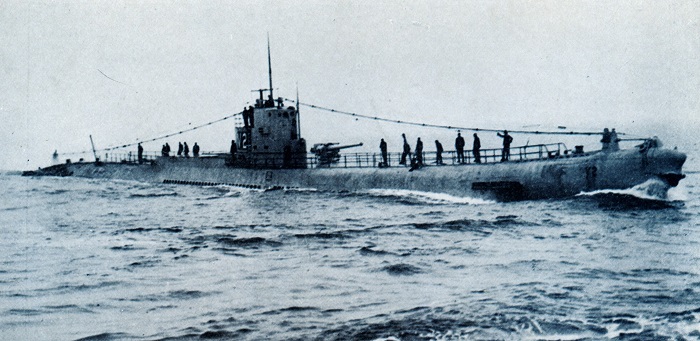
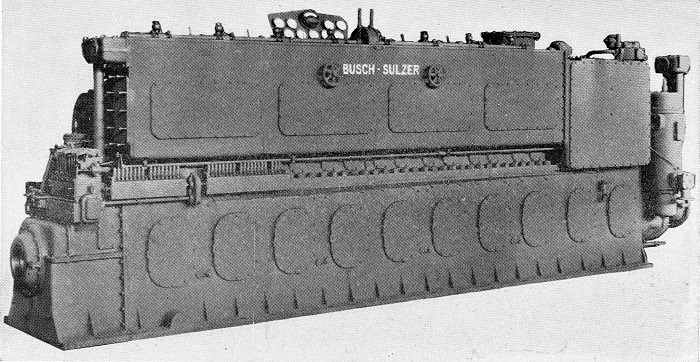
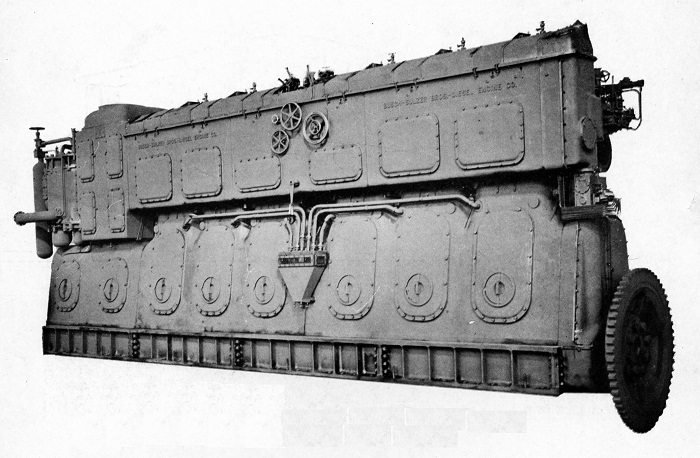
![]()
Passenger / Cargo ships
Yomachichi
Cargo ship built 1919 for the US Shipping Board, powered by steam, replaced in 1927 by a Busch-Sulzer 6S76 3,000bhp diesel.
Sawokla
Cargo ship built 1920 for the US Shipping Board, powered by steam, replaced in 1926 by a Busch-Sulzer 6S76 3,000bhp diesel.
City of Rayville
Cargo ship built 1920 for the US Shipping Board, powered by steam, replaced in 1927 by a Busch-Sulzer 6S76 3,000bhp diesel.
City of Dalhart
Cargo ship built 1921 for the US Shipping Board, powered by steam, replaced in 1927 by a Busch-Sulzer 6S76 3,000bhp diesel.
E.T.Bedford
Tanker built 1921 for Standard Oil of New Jersey with reciprocating steam engines, replaced in 1926 by two Busch-Sulzer 4S76, each developing 1,800bhp.
New Jersey
Dredge built 1927 for the Great Lakes Dredge and Dock Company, Chicago Illinois.
Four Busch-Sulzer model 6 CE-17 1,150bhp totalling 4,600bhp.
John F Cushing
Great Lakes Tug built 1928 for the Great Lakes Dredge and Dock Company, Chicago Illinois.
One Busch-Sulzer model 6-CM-17 6-cylinder 1,000bhp diesel. Re-engined 1968 with Fairbanks Morse diesels.
Lake Ormoc
Cargo ship built 1928 for the Ford Motor Company, one Busch-Sulzer 6S43 1,000bhp engine.
City of Elwood
Cargo ship built ?? for the US Shipping Board, powered by steam, replaced in 1929 by a Busch-Sulzer 6ST76 4,000bhp diesel.
Ward
Cargo ship built 1929 for the US Shipping Board, powered by steam, replaced by one Busch-Sulzer 6S76 4,000bhp engine.
Kalakala (Passenger / Vehicle Ferry)
The Kalakala operated as a ferry on Puget Sound from 1935 until 1967. The vessel was notable for the unique streamlined superstructure, art deco styling and luxurious amenities. After retirement the ship was moved to Alaska for further use in the crab and shrimp industries. Having been recognised as an iconic vessel the ship was refloated and towed to Puget Sound in 1998 with the new owner intent on returning the ship to its former glory. Unfortunately the restoration of the vessel never took place, in 2011 the Coast Guard declared the ship a navigation hazard, with the vessel being scrapped in 2015.
The Kalakala had been created from the remains of the Peralta, a ferry operating on the San Francisco Bay - Oakland service between 1926 - 1933. The vessel was of the double ended design and powered by a steam-turbo-electric power plant. The ferry's life was not without incident. Whilst docking at Oakland on February 17th 1928, the improper loading of the rear ballast tanks caused the bow to sink, leading to the death of five passengers. Five years later whilst moored at Oakland ferry terminal on the evening of May 6th 1933, a nearby fire spread to the Peralta leading to the vessel being written off by her insurance company, although the hull remained intact. This drew the attention of Alexander Peabody, president of the Puget Sound Navigation Company, purchasing the hulk in October 1933, thereafter towed to Lake Washington Shipyards, Houghton, Washington by the tug Creole.
The rebuilding of the vessel took two years with the remains of the superstructure and machinery removed. The beam was reduced from 68 ft to 55 ft 8 inches, with the vessel to carry both passengers and road vehicles. The vessel's unique styling was influenced by Louis Proctor, a Boeing Company engineer, giving the superstructure a distinctive aircraft-themed design. The interior was of modern art-deco styling, with a full-service galley, a ladies' lounge, and a men's bar on the lower deck. The design did reduce functionality, the location of the wheelhouse and its small size created visibility issues and difficulties when docking. The post-war increase in the size of American cars caused space and access problems on the car deck.
Propulsion was provided by a ten cylinder 3,000bhp Busch-Sulzer diesel engine, driving directly a single propellor, giving a maximum speed of 17.5 knots. For many years the ship suffered from a strong vibration, possibly caused by poor alignment of the engine when installed. The installation of a five bladed propellor in 1956 reduced the vibration considerably.
Service commenced on July 4th 1935 operating between Seattle & Bremerton and occasional moonlight cruises, remaining on this route until 1955 when the Kalakala was transfered to the Port Angeles - Victoria run, remaining on this route until 1959.
After retirement in 1967 the Kalakala was sold and towed to Ouzinkie, Alaska to work as a crab cannery and was later sold to a shrimp processing company, being beached in Kodiak in 1970 and remodelled internally. The vessel eventually drew attention of those seeking to preserve her and thus in 1998 the ship was made seaworthy and towed back to the Seattle area. In the following years the vessel became something of a white elephant for multiple owners, spending time at Union Bay, Seattle, Neah Bay and Tacoma. The vessel never did recieve any repairs its owners desired.
The Kalakala was moved one last time to a drydock in Tacoma and scrapped there during January & February 2015. A few pieces such as windows, pilot house and the rudder were sold as souvenirs.
Displacement tons: 1,417 (gross) 963 net
Length: 276 ft (84 m)
Beam: 55 ft 8 in (16.97 m)
Draught: 21 ft 6 in (6.55 m)
Passengers: 1,943
Cars: 110.
Mormacland (later: HMS Archer, Anna Selan, Tasmania, Union Alliance)
C3 type passenger cargo ship, laid down August 1939 at Sun Shipbuilding & Dry Dock Company, Chester, PA.
Launched December 14th 1939, completed April 24th 1940 for Moore-McCormack Lines for Atlantic service to South America .
Passengers 10 - 12.
Four Busch-Sulzer diesels connected to a single prop shaft through Westinghouse electrical couplings and a Falk single-reduction gear set.
Shaft horsepower of 8,500, maximum speed 16.5 knots.
Requisitioned by the Maritime Commission May 1941 for conversion to an Auxiliary Aircraft Carrier and transfer to the British Royal Navy.
Conversion handled by Newport News Shipbuilding & Dry Dock Company, Virginia, May 1941 - November 1941. Commissioned into the Royal Navy as HMS Archer (D78) on November 17th 1941.
December 23rd 1941 - January 2nd 1942: acceptance trials, catapult launcher damaged, one aircraft lost, launcher repairs needed.
January 13th 1942 - to Kingston, Jamaica to collect four aircraft. On evening of January 13th the Archer collided with the Peruvian merchantman SS Brazos 200 miles east of Charleston SC. The crew of the SS Brazos transferred to the Archer, the SS Brazos would later sink. On January 21st 1942 the Archer reached Charleston SC, recieving repairs which were completed early in March 1942.
March 1942: join convoy AS.2 Charleston - Puerto Rico - Freetown (Sierra Leone)
May 1942: sailed Freetown - Cape Town, intended for Mombasa but the ships engines and other equipment continued to malfunction. The ship was scheduled to sail to Greenock June 8th 1942 but continued engine problems saw her diverted at Freetown to New York for repairs. Further engine problems saw the Archer diverted to Bermuda to make repairs. New York was reached on July 15th 1942.
November 1942: repairs completed, sailed with convoy UGF2 to Casablanca, then to Gibraltar to join MKF3 from Algiers to Liverpool, arrived December 3rd 1942.
December 1942 - February 1943: repairs completed, the Archer remained locally, even being inspected at Scapa Flow by His Majesty King George VI.
May 2nd 1943: sailed for convoy support duties near Iceland, supporting ONS6, ON182, HX239 & ON184. On the morning of May 23rd 1943 a Swordfish from the Archer sank U-752 with rockets, a second U-boat was later hit by rockets from a Swordfish and also sank. Several days later the Archer was back on the Clyde for further repairs before being assigned duties in the Bay of Biscay. By the beginning of August 1943 the Archer was back at Greenock to undergo major repairs to the engines which had proved unreliable since the ship was built. The repairs were found to be very extensive leading to the ship being taken off active duty on November 6th 1943, being used for stores and accommodation.
During August 1944 the Archer was towed to Belfast to be converted to ferry aircraft. This work was completed on March 15th 1945 at which point the HMS Archer was decommissioned and renamed the MV Empire Lagan and sailed on May 24th 1945 with convoy UC69 from Liverpool to New York. The vessel made a journey across the Pacific to Brisbane (September 12th 1945), Auckland (September 6th 1945), Sydney (September 16th - 19th 1945) and Brisbane (September 21st - 25th 1945 - for UK - via Hong Kong?), arriving back in the United Kingdom early in December 1945. No longer required by the British the ship reached Norfolk, VA early in January 1946, was stricken for disposal on February 26th 1946 and moored on the James River.
1948 - 1955 Anna Selan
Sold to Sven Salen of Stockholm, registered owner as Rederi A/S Pulp Company, rebuilt at Bethlehem shipyard, Baltimore as passenger ship to accommodate 600 passengers. Renamed Anna Salen and used on emigrant sailings in 1949 from Europe to Canada & Australia.
The Anna Salen appears to have been frequently chartered by the International Refugee Organisation (IRO) which was formed in April 1946 to handle the displaced persons following the end of World War Two. The IRO ended at the end of June 1952 with other aid/relief organisations taking over the responsibilities. The IRO would frequently pay for the cost of the displaced persons tickets.
May 22nd 1949: departed Naples for Australia. The passenger list contained 1,477 names, but this may not be complete, displaced persons came from Germany, Hungary, Russia, Ukraine, Latvia, Poland, Czechoslovakia, Romania and other countries.
June 23rd 1949: the ship was slightly delayed in entering Sydney due to a strong south-westerly gale. There were 1,503 displaced persons on board. It departed on June 25th for Naples via the Suez Canal.
July 6th 1949: three Czechoslovakian stowaways with no papers who boarded at Naples would not be allowed to land in Australia in accordance with the policy of the Commonwealth Immigration Department, they would be returned to Europe. They had fled Czechoslovakia due to the communist regime.
August 1st 1949: departed Naples for Australia.
October 2nd 1949: departed Naples for Melbourne.
October 25th 1949: diverted to Fremantle due to serious health issues on the ship. Most cases included measles with some scarlet fever and chicken pox, many also suffering from malnutrition.
November 5th 1949: area hospitals at Perth/Fremantle were assisting 62 babies / children from the Anna Salen, seven had also died - some on the ship, some at Perth. 413 refugee children had joined the ship in Naples Italy, many from nearby refugee camps. In particular the camp at Bagnoli was singled out for its unsatisafactory conditions, with a lack of food or if it was available the waiting migrants could not afford it.
December 1st 1949: departed Naples for Melbourne, Australia.
December 24th 1949: on December 18th? the eastbound Anna Salen suffered engine trouble in the Indian Ocean with 1,570 displaced persons on board. The Norwegian vessel Skaugum (12,300 tons) eastbound and empty towed the Anna Salen to Aden, where passengers were transferred to the Skaugum to continue to Australia, due at Fremantle on January 4th 1950. The Anna Salen departed Aden on December 24th 1949 headed for Italy for major repairs.
June 24th 1950: departed Bremerhaven for Melbourne, arrived July 29th 1950. This was the Anna Salen's first voyage since the major mechanical difficulties encounter in December 1949.
August 4th 1950: three Australian stowaways were removed from the ship at Melbourne, just prior to sailing for Tientsin. They were among a group of volunteers hoping to fill in for 21 Italian sailors who had walked off the ship in Melbourne because they did not want to enter Korean combat waters. The ship had originally been scheduled from Melbourne to Djakarta to repatriate Dutch nationals. The ship, captained by V.von Schewen would bunker in Borneo, then call first at Nagasaki to pick up US protection?? At Takubar, the port for Tientsin 1,315 refugees, mostly elderly including a group of White Russians and many Jews displaced from Central Europe and Russia were to head for Bremen, Germany along with 30 International Refugee Organisation nurses, the ship would sail via the Panama Canal. By late November the ship had reached Naples where about 750 people transferred to the Jewish motorship Negbah for passage to Israel. The remaining 500 passengers sailed on to Bremerhaven where most were expected to apply for immigration to the United States. About 80 passengers remained at Naples and were headed for South America or British dominions.
December 31st 1950: arrived Fremantle with 1,520 migrants / displaced persons.
April 19th 1951: at Halifax from Bremerhaven.
May 14th 1951: at Halifax from Bremerhaven, 1,200 passengers.
June 4th 1951: at Halifax from Bremerhaven, 1,100 passengers.
July 4th 1951: at Halifax from Bremerhaven.
July 24th 1951: departed Bremerhaven, arrived Halifax August 3rd 1951.
August 25th 1951: at Pier 21 in Halifax from Bremerhaven.
October 9th 1951: departed Bremerhaven? to Quebec October 18th 1951. Reportedly cracks in the bow prevented docking at Pier 21 in Halifax.
November 5th 1951: departed Bremerhaven.
November 16th 1951: at Halifax from Bremerhaven, bad weather was encountered en-route.
November 26th 1951: departed Bremehaven, at Halifax December 6th 1951.
December 15th 1951: departed Bremerhaven via Le Havre, arrived at Pier 21 in Halifax NS on December 29th 1951 - reportedly a rough crossing, with the storm damaging the rudder and perhaps the reason for stopping at Halifax.
January 29th 1952 departed Bremerhaven, arrived Halifax on February 8th 1952, 1,356 passengers.
February 21st 1952: departed Bremerhaven for Australia via Cape Town, arrived Adelaide March 28th 1952.
March 31st 1952: to depart Melbourne for Bremerhaven.
June 16th 1952: departed Bremerhaven (or Helsinki?) arrived Halifax, Nova Scotia, Canada (Pier 21) on June 25th 1952, for New York with Olympic Games passengers.
August 13th 1952: whilst carrying 800 returning Olympic Games passengers en-route from Helsinki to New York the Anna Salen collided with the 18,369 ton Norwegian whale factory ship Thorshovdi in the Pentland Firth. The ships reported they were not in need of immediate help, small fires had been put out. The Anna Salen anchored at Lyness (Scapa Flow) to make repairs, with damage to the upper portion of the bow. Horst Merkel was the helmsman aboard the Anna Selan at the time of the collision, no blame was attached to either party due to thick fog being present. Arrived Halifax August 26th.
March 14th 1953: departed Bremerhaven for Australia, at Melbourne April 18th 1953 with migrants from Greece.
July 2nd 1953: departed Bremerhaven, at Quebec July 11th.
August 2nd 1953: at Quebec City from Bremen.
October 26th 1953: at Quebec City from Bremerhaven.
November 14th 1953: scheduled to depart Bremerhaven for Melbourne, due December 19th.
July 3rd 1954: at Melbourne from Bremerhaven for Sydney and Indo-China.
From the above voyage daily news sheets contained the following helpful information:
No bedding on deck please. Do not lie around in bed all day because you are seasick. A daily homily from a Catholic and a Protestant padre.
Look after your children on deck. Danger of sunburn. Don't let traders from Aden into your cabin.
Return the deck chairs & table tennis equipment by 5.00pm. Don't sleep on deck at night even if the cabins are stifling hot.
Do not stow the deck chairs in the lifeboats! The quality of the food is the same, it is tasteless because you have lost your appetite.
Fresh water will be rationed after Aden. Earthquake survivors will be picked up from the port of Piraeus. Treat them kindly.
Library, kindergarten and English classes available. Please return your books. Two babies and an elderly lady died during the voyage.
September 10th 1954: departed Bremerhaven for Australia.
October 1st 1954: crossed equator, eastbound.
October 16th 1954: at Melbourne from Bremerhaven, parts of the sailing were reported to be quite rough.
December 1954: at Melbourne.
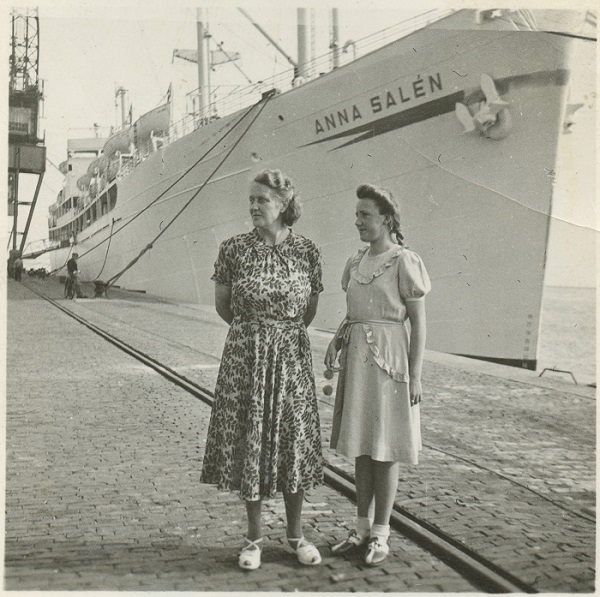
March 12th 1955: at Melbourne from Bremerhaven, Malta (February 8th), Greece, Aden.
June 16th 1955: arrived Melbourne from Bremerhaven.
1955 - 1961
1955: sold to Cia Nav SA Piraeus, Greece, renamed Tasmania used on the Piraeus - Melbourne service by Hellenic Mediterranean Line.
August 23rd 1955: departed Greece for Australia, arrived Melbourne September 23rd 1955. The return westbound trip included a stop at Saigon to take French troops to Le Havre.
April 3rd 1956: ran aground near Melbourne, some hull damage, repairs delayed the ship's departure for eleven days.
October 15th 1956: departed Melbourne for Greece. After arrival the vessel entered a shipyard to be converted to a cargo hauler.
1961 - 1962
1961: sold to China Union Lines, Taipei, renamed Union Alliance.
Brief summary of the United States Coast Guard report dated April 8th 1963 with regard to the collision between the Union Alliance and the Berean on November 7th 1961:
On the evening of November 7th 1961 the Berean, 9,003 gross tons was northbound in the Houston Shipping Channel, having entered the channel at 21.15 with a pilot. The ship was loaded with oils and chemicals. The Union Alliance had sailed at 18.30 southbound in the Houston Shipping Channel with a pilot. The ship carried general cargo and was headed for New Orleans. About two hours later at 20.30 the ship experienced steering issues and came to a stop, dropping the anchor to make repairs. It was discovered the starboard steering motor was grounded. Reliance was then placed on the port steering motor, the ship was restarted and brought up to nine knots. In making a course correction at Beacon 75 the rudder jammed, the engines were put in reverse and the anchors dropped.
Just prior to this loss of control of the Union Reliance, the Berean whilst passing Morgan Point had seen the approaching southbound Union Reliance and issued a single blast on the whistle to indicate a port to port passing. At this time the steering failure on the Union Reliance caused it to sheer across the channel, both ships issued three whistle blasts, dropped anchors and put the engines full astern. Shortly thereafter the Berean grounded lightly on the east channel bank, at which point at 23.15 the Berean's side was raked by the bow of the Union Reliance, the Berean's No.1 cargo tank ruptured with its contents of acrylonitrile sprayed everywhere and immediately catching fire. The forward half of the Union Alliance was fully engulfed in flames leading to the loss of twelve lives, including the pilot.
On the Berean two small explosions occurred after the collision with fire in the cargo tanks. Sixteen crew were ordered into three lifeboats, some parts of the ship were ordered flooded but it was not until 03.30 the fire authorities had sufficient resources in position to start a serious attempt to subdue the flames. By 04.30 the fire was under control, thirty minutes later tugs pulled the Berean away from the Union Reliance. There were no casualties on the Berean.
On the Union Reliance attempts to put out the fires were not immediately successful, particularly those in holds Nos.1, 2 & 3. The ship was eventually towed to the Bolivar Roads, Galveston to allow the fires to burn themselves out over three days.
The Union Reliance was sold for scrap in January 1962, being scrapped in New Orleans several months later.
The Coast Guard report also mentioned the four Busch-Sulzer seven cylinder diesel engines with electro magnetic slip couplings and straight reduction gear. It was noted that when manouvering two engines would be used to go ahead and two to go astern. It would take about one minute to put all four engines ahead or astern, but it could not be recalled of ever using all four engines to go astern.
Mormacmail
NEED TO CHECK ENGINES
C3 type passenger cargo ship, laid down July 1939 at Sun Shipbuilding & Dry Dock Company, Chester, PA.
Launched January 1940, completed ?? for Moore-McCormack Lines for Atlantic service to South America .
Acquired by the United States Navy March 1941, commissioned June 1941 as the escort carrier Long Island (AVG-1).
Initially used to qualify pilots at Norfolk, making one trip to Newfoundland as a convoy escort, then in May 1942 headed for San Francisco for pilot training. Departed San Diego for Pearl Harbor in July 1942, then transported aircraft via Fuji to the Guadalcanal area, then sailing for the New Hebrides. By late September 1942 the Long Island was back at San Diego for a long period of pilot training, but would make trips to the Pacific outposts to deliver aircraft and pilots. At war's end the Long Island was used to bring soldiers and sailors home from the Pacific theatre, operation 'Magic Carpet'.
In March 1946 the Long Island was decommissioned, struckoff during April 1946 and sold for scrapping the same month to Zidell Ship Dismantling Company, Portland, Oregon.
Acquired on March 12th 1948 by the Canada - Europe Line and converted for merchant service which was completed in 1949, being renamed Nelly, serving as an immigrant carrier between Europe & Canada until 1953.
In 1953 sold to the University of the Seven Seas and converted into a schoolship, renamed Seven Seas. For 13 years the ship sailed the world before being sold to the University of Rotterdam as a floating dormitory, at least until 1969.
1939
later Nelly & Seven Seas.
Two others Mormacpenn & Mormacyork.
TROVE NEXT "ANNA SALEN" PAGE 10
******************************
Resources:
Busch-Sulzer: The Diesel Engine (1913)
Busch-Sulzer: The Diesel Engine Type B (1915)
Busch-Sulzer: Report on Installations at Cleburne TX & Sherman TX (1914)
Busch-Sulzer: McMinnville OR report (1929)
Busch-Sulzer: advertising material for municipalities (1932)
Busch-Sulzer: Village of Freeport NY publicity material
Busch-Sulzer: Madison SD publicity material
Busch-Sulzer: publicity material listing 193 Sulzer engined ships
NavSource Online
Orkney Image Library site (includes postings from former passengers)
Page added July 2022
Last updated January 18th 2023
